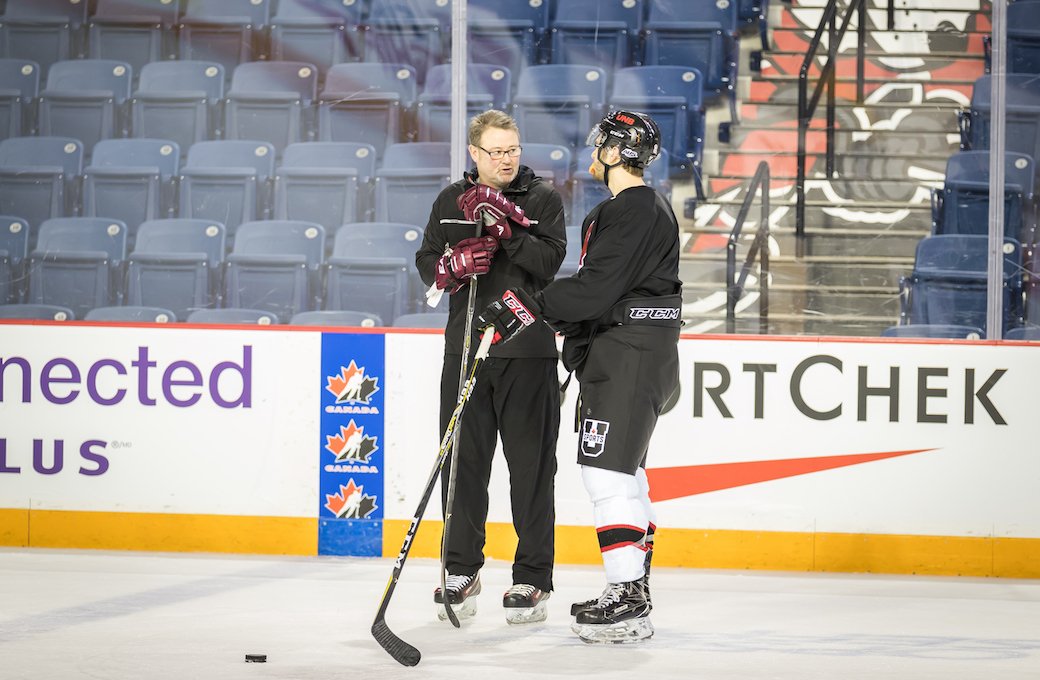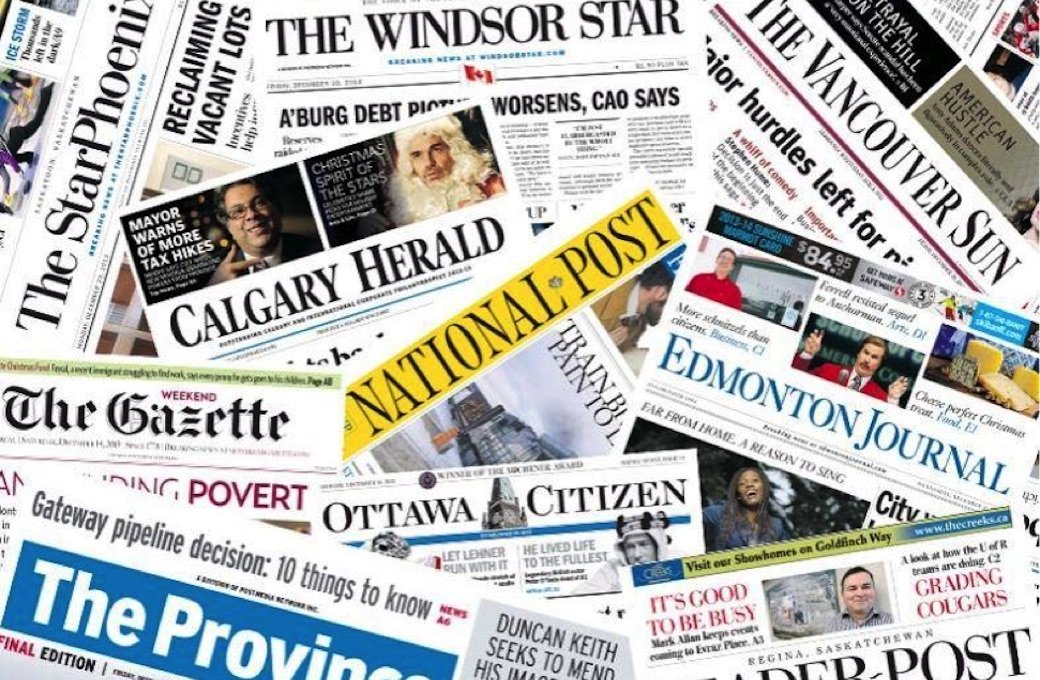Corporate
All-Star Stienburg right at home behind U SPORTS bench


Andrew Bucholtz

The Canadian media world is getting smaller, with over 40 community newspapers and free dailies swapped and mostly closed down by Postmedia and Torstar in November. That follows on the heels of other similar deals across the country that have led to massive community newspaper closures, including one between Glacier Media and Black Press back in 2014. And that’s far from the only reduction in coverage out there; the Guelph Mercury ended its print edition in January 2016, CRTC decisions over the past few years have led to less funding for community television and many stations closing, several universities have cut back on funding for their student papers, and even big newspapers like The Globe And Mail have ended print distribution in entire regions (namely Atlantic Canada in that case). U SPORTS President and CEO Graham Brown says this is a disturbing trend, and one that’s going to affect every level of the Canadian sports landscape.
It’s just this ongoing disintegration of what has been, and hopefully we can find some way to continue building communication models to promote sport. This is a bigger discussion for sport across the country, not just U SPORTS.
“All these changes in newspapers and local television…take Guelph losing The Guelph Mercury, now what has happened at the Globe and Mail, taking away regional papers, losing regional distribution, what the television companies have done by losing community television,” Brown says. “At the time, the CRTC thought consumers would benefit from lower cable packages, but who knew that it was in exchange of shutting down all the community television stations? And CTV no longer doing sports on the 6 and 11 p.m. television news…it’s just this ongoing disintegration of what has been, and hopefully we can find some way to continue building communication models to promote sport. This is a bigger discussion for sport across the country, not just U SPORTS.”
Brown’s appreciation of media’s impact on sport goes back to his youth growing up in Blenheim, Ont., where the community newspaper (The Blenheim News-Tribune) was and still is the cornerstone of the local sport community. Since then, he’s seen the importance of media on a provincial and national level in his leadership positions with the Ontario Minor Hockey Association, Rugby Canada, and now, U SPORTS.
Bell Media confirms CTV local news job cuts while 'phasing out' sportscasts https://t.co/7xIJlMPV8M pic.twitter.com/VKGCCtufRj
— Ottawa Sun (@ottawasuncom) November 21, 2017
As Brown says, the changes in Canadian media are something that’s going to impact sport across the country. But some of the heaviest sports implications from these may fall on U SPORTS and other community sports organizations, as the local newspapers and community TV stations closing down have been critical to covering community sports. As someone who worked at community newspapers in B.C. for several years, I can speak to the importance of covering local sports at those outlets, from minor soccer and hockey to high school football to local U SPORTS teams across sports. Our emphasis was always on the local; there are plenty of other places to read about NHL or MLS teams, but not many that are covering what the local community, high schools and universities are doing.
And Brown says there’s a big impact there from closures of papers like the Mercury, which was large enough to cover professional sports as well, but still did a tremendous job with local community sports coverage.
There’s hundreds of pages of community sport promotion that’s out the window, and a lot of that is the Guelph Gryphons. And that’s happening across the country. Universities are no longer in some cases even funding their own newspapers, so you’re losing that student community newspaper.”
“You lose a newspaper like the Mercury in Guelph, every day they’d have four pages of sport,” Brown says. “And two pages of that would be pro, I get that…but the fact of the matter is over 365 days, there’s hundreds of pages of community sport promotion that’s out the window, and a lot of that is the Guelph Gryphons. And that’s happening across the country. Universities are no longer in some cases even funding their own newspapers, so you’re losing that student community newspaper.”
The blows to student papers are something that also should be concerning, especially for those who care about U SPORTS. I spent three years working on the sports side at The Journal at Queen’s University, and saw first-hand not only how dedicated my colleagues were to covering our school’s teams, but how important that coverage was to the coaches and athletes involved. Sports coverage was a reason for many to read the paper, and it was something that meant a lot for those we covered.
And that experience was far from an anomaly: colleagues I’ve met from student newspapers across Canada have talked about how important sports coverage was for their papers, and for the people they wrote about. Like other levels of community sport, U SPORTS has many phenomenal athletes who go on to success on the national and international stages, whether it’s the Olympics, the CFL, the NHL or other professional leagues. But newspapers, student and community, play a key role in letting people know about those athletes.
News coverage itself isn’t going away, but it’s changing dramatically thanks to these moves. And Heritage Minister Melanie Joly’s comments in September suggest the federal government isn’t going to help save local newspapers and television stations.
Bell Media cuts CTV Calgary sports reporter positions https://t.co/ClEs1I9Qyf pic.twitter.com/t4qiuGo5Cj
— Calgary Herald (@calgaryherald) March 30, 2017
We will focus our efforts on supporting innovation, experimentation and transition to digital.
Joly
“Our approach will not be to bail out industry models that are no longer viable,” Joly said. “Rather, we will focus our efforts on supporting innovation, experimentation and transition to digital.”
Brown says a shift towards regional papers, bigger media organizations, and expanded digital coverage has some advantages, but it has major drawbacks too, especially when it comes to sports in smaller communities that were once covered locally but are unlikely to receive regional attention.
“This whole change in media, I think there’s tremendous upside,” says Brown. “But I think people need to realize the downside.”
The moves in community television are particularly concerning for Brown, and he expects the trend of station closures there to continue.
“Community television is probably the biggest one,” he adds. “Shaw has shut down their Western Canadian community television. And you’re going to see it with Rogers, they’ve already started, you’re going to see it with EastLink, you’re going to see it with Cogeco.”
For all the great things we’re doing, and we’re working hard at becoming leaders in digital media, we need to understand that digital media’s important, it’s exciting, but we need to support traditional media.
There are alternatives out there, of course, with online news organizations, community blogs and forums and more. And there are a lot of benefits to digital media; I saw that myself in six years covering Canadian sports for Yahoo Canada. Digital indeed offers the flexibility to cover interesting stories from anywhere. But it has drawbacks, especially when it comes to local coverage; digital media isn’t typically as tied to place, and doesn’t typically cover community sports with the same depth as local papers and television stations. And while organizations like U SPORTS are investing heavily in their own digital media content, Brown says that won’t ever be enough to compensate for the traditional media losses and the many great stories community journalists provided on community sports.
“For all the great things we’re doing, and we’re working hard at becoming leaders in digital media, we need to understand that digital media’s important, it’s exciting, but we need to support traditional media,” says Brown. “And maybe it’s too late, maybe it is. We’re losing newspapers and everything like that. But I still thtink there’s generations of people who love that traditional approach and we need to shed a light, as bright as possible, on this issue.”
Still more questions than answers at this point, but here's what we have so far on the Rogers TV closing.https://t.co/w20Giwt9bu pic.twitter.com/p3MurfpBwJ
— The Mississauga News (@MissiNewsRoom) May 2, 2017
Brown says the problems go beyond just news outlets closing down, as cutbacks at many of the surviving outlets have led to a lot of prominent figures being let go.
“I’m just upset that this is happening. Our voices, our journalists, our radio hosts…we’re going to lose our traditional framework of what was and still is an important vehicle of getting sport messages out.”
Brown says the consequences of losing local news coverage extend to all areas, but he can particularly speak to what it means for sports. With outlets that have traditionally covered community sport closing or cutting back, there’s less and less coverage available for those outside the realm of professional sports.
 Andrew has been covering university sports in Canada since 2005 at outlets such as The Queen's Journal, The CIS Blog, and Yahoo Canada, where he also served as the editor of the Canadian football blog 55-Yard Line. He has a Bachelor of Arts (Honours) degree from Queen's University with a major in history, and currently works as a staff writer and editor for Awful Announcing and The Comeback.
Andrew has been covering university sports in Canada since 2005 at outlets such as The Queen's Journal, The CIS Blog, and Yahoo Canada, where he also served as the editor of the Canadian football blog 55-Yard Line. He has a Bachelor of Arts (Honours) degree from Queen's University with a major in history, and currently works as a staff writer and editor for Awful Announcing and The Comeback.
Corporate
Tim Wharnsby
